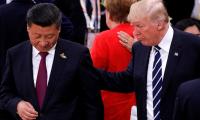There has been serious disconnect between policy formulation and the local development context in Pakistan – as is the case with other developing countries across the globe.
In the past, the country’s development policies were mostly influenced by the technical blueprints of programme designs that, at times, did not reflect local realities and the evolving needs of the poor. The top-down development models adopted during the 1960s and 1970s failed to produce a long-term impact in terms of empowering the marginalised, disfranchised and poverty-stricken rural population across the country.
There was vertical growth in urban centres in the 1960s and the early 1970s. But there was no trickledown effect of vertical economic growth in terms of poverty alleviation in rural areas. Rural poverty increased by 10 percent in the 1960s and 1970s, even though it was a period of industrial growth and macro-economic stability. What went wrong? Why did rural poverty continue to rise despite the fact that Pakistan had achieved its highest rate of economic growth during this period?
A cogent explanation for this is the absence of an institutional arrangement at the grassroots level to help the poor access the benefits of economic growth. Top-down economic growth is not poverty-sensitive and inclusive in nature. Therefore, the economic growth policy must envisage social investment at the grassroots level to enable the poor to access the benefits of growth.
Nevertheless, it is important to note that poverty is relative, complex, and multidimensional and some of its factors are beyond the control of the government. There are factors – such as international trade regimes; WTO regulations; deindustrialisation and capital flight; neoliberalism; and an increasing demand for regional security deterrence – that are beyond the control of the government. These uncontrollable factors have an impact on the prevalence of national poverty, which cannot be attributed to the role of national development policy. It is, therefore, important to avoid wild attributions of poverty alleviation to specific development approaches and policy frameworks.
However, we must understand the relevance, effectiveness and impact of various approaches and development models that can help devise realistic development programmes. Despite the adverse impact of globalisation on poverty and income disparity, there are well-grounded development models that can be scaled-up to help empower the rural poor and improve the quality of life.
Apart from top-down development models, which did not make a visible dent on controllable factors of poverty, there have been a few participatory rural development programmes initiated in 1982 from Gilgit-Baltistan and Chitral. The participatory rural development programmes initiated in 1982 by the Aga Khan Rural Support Program (AKRSP) under the leadership of Shoaib Sultan Khan created a long-term development trajectory for communities in Gilgit-Baltistan and Chitral
These rural development programmes have been replicated across the country and provide a participatory development framework to help the poor articulate their development agenda. Such schemes, on the one hand, enabled the poor to access resources and, on the other, empowered the poor as partners of transformation rather than mere recipients of economic development.
The social and human capital created in villages helped leapfrog the long journey of social change insofar that the rural communities were able to set their own development agenda. The empowerment of women is central to the participatory development approach of rural development programmes. Empowerment was realised through asset creation; skill development; business development assistance; providing access to financial services; civic engagement; and linking women entrepreneurs to the market.
Implemented at the village level, these inclusive and participatory development models have helped address the controllable factors of poverty. The participatory development model entails the formation of local organisation; the provision of relevant skills; the creation of productive assets; improving access to quality health and education services; and financial inclusion.
From the 1980s onwards, inclusive rural development models have demonstrated visible impacts in empowering the rural poor – especially women – through local organisation; asset creation; skill development; and entrepreneurship. These development models have demonstrated their potential to make a dent on the controllable factors of poverty.
The poverty alleviation impact of these programmes becomes visible when we compare human development indicators of the areas of intervention with other remote regions of Pakistan. For instance, there has been a marked improvement in human development indicators despite the geographical isolation, economic marginalisation and political exclusion of Gilgit-Baltistan.
With all the limitations of participatory rural development approaches, there is much to be learnt so that policymakers can benefit from these transformational experiments. These participatory rural development programmes have now been scaled up and are being implemented at the national level by rural support programmes.
Rural development programmes have three key features that all the top-down development models lacked. First, they are bottom-up with a basic premise that development is not possible without building inclusive, participative, transparent, and accountable institutions for the poor at the grassroots level. Second, it is more important to equip the poor with relevant skills to access available resources rather than devise top-down solutions of resource-creation and distribution. Third, there is a need to invest in local institutions for the poor through a multi-input poverty alleviation approach.
What is more important for the effectiveness of the programmatic outcomes is the idea of public-private partnerships. The most important example of such partnership is the Union Council Based Poverty Reduction Programme (UCBPRP), which was implemented by rural support programmes, with the financial support of the government of Sindh.
The programme is a great example of the collaborative work done by the government and the third sector, which has been one of the most effective programmes of empowerment and poverty alleviation in Sindh. In the true sense of the word, the UCBPRP provides a viable, scalable and replicable development model that can be studied and implemented elsewhere in Pakistan.
The programme was significant in terms of its impact on the quality of life of marginalised rural communities and their empowerment, and in dislodging the myth that governments are slow and unreliable development partners. In fact, the programme demonstrated that poverty can effectively be tackled through collaborative efforts of the government and the civil society. The outreach, scale and resources of the government and the technical expertise of rural development organisations can be the best synergy to help the rural poor climb out of poverty.
This experiment of the collaborative development model in four districts of Sindh (Shikarpur, Jacobabad, Kashmore and Tharparkar) provides a realistic policy choice for all provincial governments to invest in integrated rural development programmes. These success stories must be communicated through the mainstream media to generate an informed policy debate. This will help policymakers, development practitioners and investors to reflect on the options of long-term rural development.
After this piece, there will be a series of articles on these pages to highlight the actual stories of empowerment from the field. There are some inspirational stories of the poor who were able to emerge out of poverty because of the UCBPRP. Let’s hope that the journey of development continues through more collaborative work to build an inclusive and prosperous Pakistan.
The writer is a freelance columnist based in Islamabad.
Email: ahnihal@yahoo.com
Pakistan’s score on democracy index remains above 4 since 2008
Authorities increasingly use broad and sweeping measures to curb internet in face of political crises
President Xi calls upon countries of Global South to “support each other in taking the path to moderniaation”
Professional, modern military confronts problems by thinking along lines of its ends, ways, and means
Region has been in turmoil since 2022 with people demanding flour subsidies similar to those provided in GB
Analysts noted that unipolar order persists while new multipolar paradigm remains nascent







